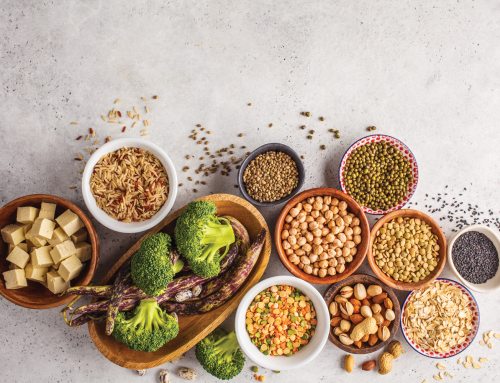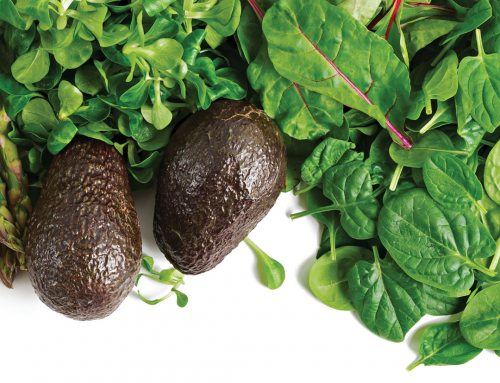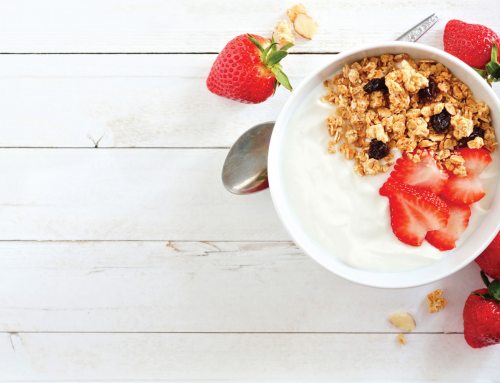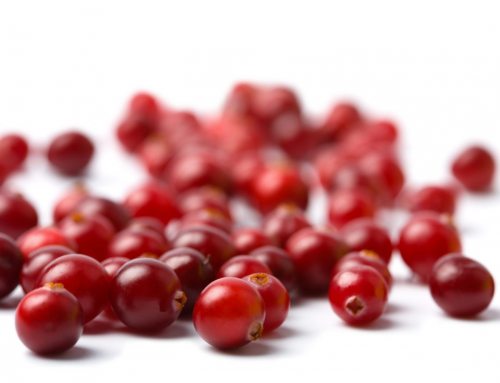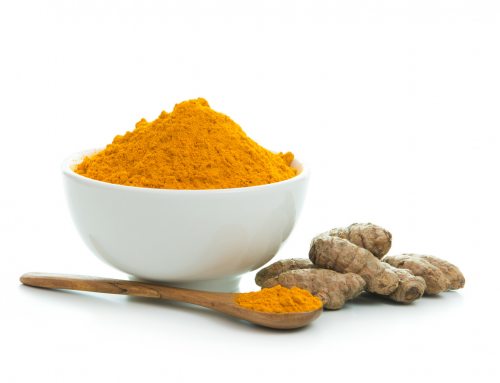Just the Basics: Simple Sports Nutrition Strategies
By Chris Newport
So you want to train for your first triathlon? You probably realize that nutrition is an integral part of training and racing, but may not know what to do. Here are some simple strategies to get you started on your new athletic adventure.
So what is sports nutrition, anyhow? Sports nutrition is the practical science of hydrating and fueling before, during, and after exercise. First and foremost, it starts with a well-balanced diet containing nutrient-rich carbohydrates, protein, and fat.
Strategy #1: Choose colorful carbs that are close to the earth. In other words, go for minimally processed whole foods like fruits, vegetables, and whole grains (e.g., brown rice, whole wheat pasta, quinoa, spelt, etc.) that are packed with vitamins, minerals, phytochemicals, fiber, and antioxidants that fight inflammation, fend off illness, and optimize muscle function. Carbohydrates, from food or from glycogen (the body’s stored version of carbs), are your muscles’ main source of fuel during exercise. It’s important to keep your “fuel tank” full for training and racing.
Strategy #2: Go for lean protein with fewer legs. Protein has a number of roles in the body. It does everything from building muscle and tendons to maintaining fluid and electrolyte balance. It comes from fish, nuts, seeds, soy, poultry, low-fat or nonfat dairy foods, lean meats and eggs. Depending on the athlete, protein needs can range from .45-.75g/lb of bodyweight.
Strategy #3: Choose healthy fats that give back. Important for any athlete, fat regulates blood sugar and satiety and facilitates cellular repair. It helps transport and absorb fat-soluble vitamins (A, E, D and K) and aids in memory retention, cognitive ability and mental clarity (don’t we all need help with that?). Go for plant- and fish-based sources like nuts, seeds, fatty fish, olive oil, canola oil, and avocado. Choose animal-based fats less often (naturally occurring fats from meat, mayonnaise, cheese, etc.) and run far, far away from chemically altered fats (trans fats) labeled “partially hydrogenated.”
Strategy #4: Hydrate! If you haven’t invested in a water bottle (or several), now is the time. One of the easiest ways to determine hydration status is by the color of your urine. It should be the color of straw. If it’s dark yellow, grab that water bottle and drink up! If you’re training or racing less than one hour, water is all you need. Choose a sports drink for long or high intensity workouts, exercise in hot/humid conditions, or training without breakfast. The best sports drink is the one you can tolerate at full strength (not watered down). There are plenty on the market, so experiment to find what works for you.
Strategy #5: It’s all in the timing. Nutrient timing is crucial to maximizing performance and minimizing GI distress. Here are some guidelines to follow:
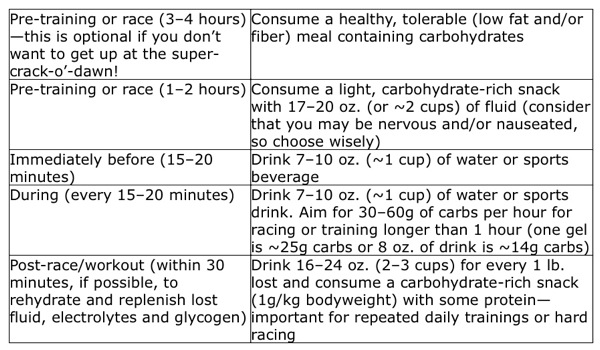
Need some ideas for snacks? Before a race or training, try a peanut butter and honey sandwich, fruit and yogurt smoothie, oatmeal and milk, or your favorite energy bar. After a race or training, try 1% chocolate milk and fruit, graham crackers and almond butter, a whole grain bagel sandwich, rice and bean burrito, or café mocha (my favorite).
Strategy #6: It’s personal. What works for one athlete may certainly not work for you. Experiment during training (in similar racing conditions and intensity, if possible) to find your best sports nutrition formula. And don’t ever try anything new on race day!
Eat well, have fun, and good luck in training and racing!
# # #
Chris Newport, RD, is the founder of Endurance NEWtrition, LLC, the premier sports nutrition counseling and endurance coaching company in the Triangle area. She is a licensed nutritionist, personal trainer, and USA Triathlon Expert Coach. She can be reached at chris@newendurance.com or check out www.EnduranceNEWtrition.com.


